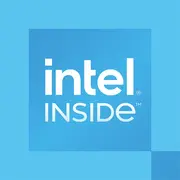Intel Processor N200

Intel Processor N200: Compact Energy Efficiency for Basic Tasks
March 2025
Intel's N-series processors have long been positioned as a solution for budget and portable devices, where key factors are battery life and minimal heat generation. The Intel Processor N200, released in 2023, continues this tradition but with enhancements from the Alder Lake-N architecture. In this article, we will explore who this CPU is suitable for, how it handles everyday tasks, and whether its purchase is justified in 2025.
1. Architecture and Manufacturing Process: Evolution of Low-Power Chips
Cores, Threads, and Cache
The Intel N200 processor is built on a hybrid Alder Lake-N architecture, but unlike higher-end models, it uses only energy-efficient Gracemont cores (without performance P-cores). The configuration includes:
- 4 cores / 4 threads (no Hyper-Threading support);
- Base frequency: 1.0 GHz, maximum in turbo mode — 3.7 GHz;
- L3 Cache: 6 MB.
The Intel 7 process (formerly known as 10 nm Enhanced SuperFin) provides a balance between performance and power consumption.
Integrated Graphics
The integrated GPU Intel UHD Graphics (24 EU) operates at up to 750 MHz. This solution is suitable for outputting to two 4K displays at 60 Hz, decoding H.265/VP9 video formats, and handling light graphics workloads. Support for DirectX 12 and OpenGL 4.5 allows for running simple games, but with significant caveats (more details in the performance section).
2. TDP 6W: Power Consumption and Thermal Design
With a TDP (Thermal Design Power) of 6W, the N200 is one of the "coolest" processors in the Intel lineup. This allows:
- Use of passive cooling (no fans), reducing noise and thickness of the device;
- Installation of the CPU in ultra-thin laptops and tablets;
- Achieving high battery life even with modest-capacity batteries (40–50 Wh).
However, the low TDP limits performance during sustained loads: when turbo boost is active, the system may throttle frequencies due to overheating.
3. Performance: Realistic Expectations
Office Tasks and Multimedia
- Office Applications (Word, Excel, browser with 10+ tabs): The N200 performs without delays. The PCMark 10 test shows a score of around 3500 points — adequate for document work and video conferencing.
- 4K Video: Hardware decoding via Quick Sync Video ensures smooth playback. However, rendering in editors like DaVinci Resolve will be extremely slow (it's better to use cloud services).
Gaming
The integrated UHD graphics are a weak point of the processor. In games (on low settings):
- CS:GO (720p): 25–35 FPS;
- Fortnite (720p, Performance mode): 20–25 FPS;
- Stardew Valley, Minecraft (without shaders): 60 FPS.
The Turbo Boost mode temporarily raises the CPU frequency to 3.7 GHz, but in games, this has little effect on FPS — the GPU remains the bottleneck.
4. Usage Scenarios: Who is the N200 Suitable For?
- Students and Schoolchildren: For study, text processing, and Zoom.
- Office Workers: Laptops like Lenovo IdeaPad 1 or HP 15s with the N200 often cost $300–400, making them a cost-effective choice for corporate purchases.
- Casual Users: Web surfing, streaming on Netflix/Youtube.
- Passive Cooling Devices: Such as the mini-PC Beelink U59 Pro for home theater use.
Not Suitable For: Gamers, engineers (CAD), video editors.
5. Battery Life: Up to 14 Hours in Ideal Conditions
With a battery capacity of 53 Wh (as in the Acer Aspire 3), operating time reaches 10–12 hours under 20% load (browsing, watching videos). Power-saving technologies include:
- Intel Dynamic Tuning: Automatically adjusts power based on workload.
- C-States: Turns off unused cores when idle.
- OS Eco Modes: In Windows 11, "Recommended Performance" extends battery life by 15–20%.
6. Comparison with Competitors
AMD Athlon Silver 7120U (Zen 2, 2 cores/2 threads, 15W TDP)
- The N200 excels in multi-threading (4 vs 2 cores) and energy efficiency.
- Prices for laptops are comparable ($300–450).
Apple M1 (8 cores, 10W TDP)
- The M1 is 3–4 times more powerful in multitasking, but devices with it are more expensive ($700+). Comparing makes sense only when choosing between a budget Windows laptop and a used MacBook Air.
Intel Pentium Gold 7505 (Tiger Lake, 2 cores/4 threads, 15W TDP)
- An outdated architecture, higher TDP, but a similar price. The N200 is preferable due to its 4 cores.
7. Pros and Cons of Intel N200
Pros:
- Record-low power consumption.
- Sufficient cores for basic multitasking.
- Low cost of devices.
Cons:
- Weak GPU for gaming and graphic tasks.
- Not suitable for professional software (Photoshop, Blender).
- Limited selection of laptops with IPS displays and fast SSDs in the budget segment.
8. Recommendations for Laptop Selection
- Device Type: Ultrabooks and budget laptops (not gaming!). Examples: ASUS Vivobook Go 15, Dell Inspiron 14 3420.
- What to look for:
- Screen: IPS panel with at least 1080p (many budget options still use TN 768p).
- RAM: At least 8 GB (4 GB in 2025 will be a struggle).
- Storage: SSD 256 GB (NVMe preferred over eMMC).
- Ports: USB-C with charging support, HDMI for projectors.
Prices for new models: $320–500.
9. Final Conclusion
The Intel Processor N200 is a solid choice for those looking for an affordable laptop for basic tasks and maximum battery life. It meets the needs of 70% of users who do not play AAA titles or edit videos. However, if the budget allows for an additional $200–300, it is better to consider Intel Core i3/U-series or AMD Ryzen 3 7320U processors — they will offer a performance cushion for the future.
Who is the N200 Suitable for in 2025:
- Parents buying a first laptop for their child.
- Retirees for communication and reading the news.
- Companies saving on office equipment.
- Travelers who value lightness and long battery life.
If your requirements fall within these parameters, the N200 will be a reliable and economical companion.
Basic
CPU Specifications
Memory Specifications
GPU Specifications
Miscellaneous
Share in social media
Or Link To Us
<a href="https://cputronic.com/cpu/intel-processor-n200" target="_blank">Intel Processor N200</a>